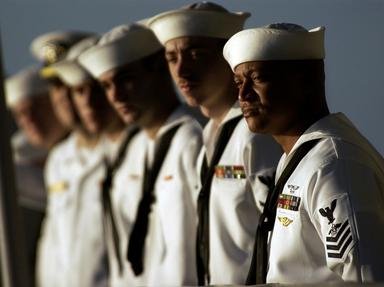Quiz Answer Key and Fun Facts
1. Many people consider the "Turtle" to be the first American submarine. It saw action in what war?
2. The first submarine to sink an enemy warship was built by the Confederacy during the Civil War. On February 17, 1864 it attacked and sank the USS Housatonic in Charleston harbor. What was the name of this historic submarine?
3. Although not nearly as famous as the vessel in the previous question, the Union navy built its own submersible warship. What was its name?
4. The Navy continued to experiment with submersible vessels, but the first "official" U.S. submarine was USS Holland (SS-1). What year was she commissioned?
5. The United States lost no submarines in combat during World War I. But even in peace time, submarine duty is a dangerous business. How many U.S. submarines were lost prior to the beginning of WWII?
6. Submarine warfare played an important role during WWII. How many U.S. submarines were lost during the war?
7. During WWII, how many American submariners lost their lives in the service of their country?
8. No submariner has ever been awarded the Medal of Honor.
9. After WWII, the world of submarines changed forever when nuclear power replaced diesel engines and batteries as a means of propulsion. This revolutionary change was largely the work of one man. Who is known as "the father of the nuclear Navy?"
10. The first nuclear powered submarine was commissioned on September 30, 1954. What was her name?
11. The advent of nuclear power also introduced a new type of submarine - one that carried nuclear missles. What was the name of the Navy's first ballistic missile submarine?
12. Women are now allowed to serve on submarine duty.
13. When ballistic missile submarines go out on "patrol," how long does the deployment usually last?
14. Since WWII, the Navy has lost two nuclear powered submarines. What were their names?
15. The U.S. Navy allows submariners to wear special insignia to distinguish them from other sailors. What is this insignia called?
Source: Author
daver852
This quiz was reviewed by FunTrivia editor
gtho4 before going online.
Any errors found in FunTrivia content are routinely corrected through our feedback system.
